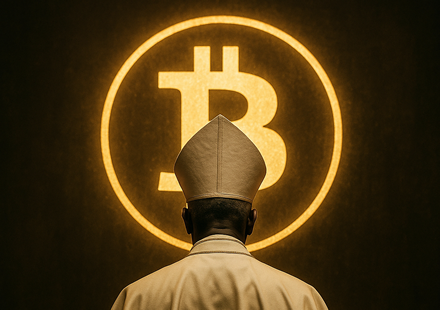The Pope, Their Demise, and Market Reactions: A Historical Analysis
Introduction
The death of Pope Francis marks a significant moment not only for the Catholic Church but also for global markets. With over 1.3 billion Catholics—approximately 17% of the world’s population—the Vatican’s influence extends beyond religion into economics. Historically, papal transitions have coincided with measurable market movements. This article examines past trends, the unique circumstances of Francis’s passing, and what investors might expect in the coming weeks.
The Catholic Church’s Economic Footprint
The Catholic Church is one of the wealthiest religious institutions, with vast assets in real estate, art, and financial holdings. Many of the world’s most economically influential nations—Italy, France, Spain, Brazil, and the United States—have significant Catholic populations. The Vatican Bank alone manages billions in assets, and the Church’s charitable and business ventures have indirect but tangible effects on global markets.
Historical Market Reactions to Papal Deaths
Examining past papal transitions reveals intriguing patterns. Below is a summary of key financial movements following the deaths of recent popes:
Pope John Paul II (2005)
Global Stocks (MSCI World Index): +1.2% in the week following his death.
Gold: Rose 2.5%, possibly due to short-term uncertainty.
Italian Bonds (BTPs): Slight volatility but no major sell-off.
Pope John Paul I (1978, 33-day reign)
Dow Jones Industrial Average: Fell 1.8% in the interregnum period.
Gold: Increased 3.1%, reflecting broader market unease.
Pope Paul VI (1978)
FTSE 100: Minimal reaction, but Italian stocks dipped briefly.
Oil Prices: Unaffected, as geopolitical factors dominated.
Interregnum Periods (Between Popes)
Historically, the period without a pope has seen mild volatility, particularly in European markets. Investors appear cautious until a new leader is selected, after which markets typically stabilize.
The Ratzinger Exception: A Resignation, Not a Death
When Pope Benedict XVI resigned in 2013—the first papal resignation in 600 years—markets showed muted reactions:
S&P 500: Flat in the following week.
Euro Stoxx 50: Slight dip (-0.6%) due to broader European concerns.
Bitcoin (then in infancy): No significant movement.
The Francis Factor: A First for the Crypto Era
Pope Francis is the first pontiff to pass away in the age of Bitcoin and digital assets. Given the Church’s cautious stance on cryptocurrencies, any official statements from the Vatican regarding blockchain or financial policy could sway crypto markets.
What Happens Next?
Interregnum Volatility: Expect minor fluctuations in European equities and gold.
Conclave Impact: Once a new pope is elected, markets may react based on perceived economic policies (e.g., a reformist vs. traditionalist pope).
Bitcoin Watch: If the new pope comments on digital currencies, crypto markets could see movement.
Investment Recommendations
Short-term: Gold may see a brief uptick as a safe-haven asset.
European Stocks: Monitor Italian and Spanish indices for sensitivity.
Crypto: Low likelihood of major swings unless the Vatican issues unexpected guidance.
Conclusion
While papal transitions are not major market-moving events, they introduce a layer of geopolitical and sentimental uncertainty. Investors should remain attentive but not overreact—history suggests any financial impact will be short-lived.
Further Reading:


